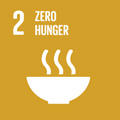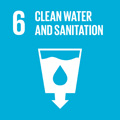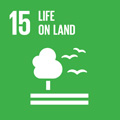- Docente: Claudio Ciavatta
- Credits: 6
- SSD: AGR/13
- Language: Italian
- Teaching Mode: Traditional lectures
- Campus: Cesena
- Corso: First cycle degree programme (L) in Viticulture and Enology (cod. 8527)
-
from Feb 19, 2025 to May 21, 2025
Learning outcomes
The student at the end of the course has got knowledge dealing with the structure and characteristics of the soil as well as of the main chemical and biochemical processes involved to determine its fertility. He has skills and ability to independently manage the technical and conceptual tools for the study and to analyze physical, chemical and biochemical parameters of soil, with particular reference to pedological ones where vignards are cultivated. The student will be able to maintain or to increase the soil fertility and to preserve the environment.
Course contents
The student at the end of the course has got knowledge dealing with the structure and characteristics of the soil as well as of the main chemical and biochemical processes involved to determine its fertility. He has skills and ability to independently manage the technical and conceptual tools for the study and to analyze physical, chemical and biochemical parameters of soil, with particular reference to pedological ones where vignards are cultivated. The student will be able to maintain or to increase the soil fertility and to preserve the environment.
Course Contents
A) Prerequisites
The student who accesses this teaching has a good preparation in the fundamentals of mathematics, physics, chemistry, plant biology and agricultural microbiology. These prerequisites are provided by the basic teachings given during the first year.
B) Unità
didattiche
The course is divided into two teaching units.
Unit 1 – Soil chemistry (25 hours)
1.1 Principles of formation and evolution of
soil
Pedogenesis: chemical, physical, and biological factors of soil formation and evolution. Classification: the profile and the diagnostic horizons of the soil. Elements of classification
1.2 Soil phases
Mineral solid phase: silicates and phyllosilicates, allophane, oxides and hydroxides, carbonates. Organic solid phase: mineralization and humification. Structure, properties and functions. Extraction, fractionation of humic substances. Soil solution: composition, potential, retention and movement. Gaseous phase: composition of the telluric air and gaseous exchange.
1.3 Physical and chemical soil properties
Physical properties: texture, structure, density and porosity. Issues related to the soil erosion, with particular reference to the vignard systems. Chemical properties: specific surface of soil particles, origin of the charges, adsorption and cation exchange, models and thickness of the double layer potential, the basis of exchange, characteristics of ion exchange, affinity, lyotropic series, equation of exchange, dilution effects . Adsorption and anion exchange: anions in the soil and specific adsorption. Adsorption of phosphates: isotherms and equations, mechanisms of dissolution and precipitation. Soil reaction: the pH and its measurement, active and exchangeable acidity, soil classification according to the pH, nutrients and pH, pH and biological activities of the soil, the main buffer systems and mechanisms of regulation of the soil pH. Basics of statistics applied to the physico-chemical composition of soil.
1.4 Soil as a biological system
Soil organisms: composition, functions. Soil enzymes: composition, properties and functions. Rhizosphere: composition, properties and functions. Organic matter: composition, physico-chemical properties. dynamic and agronomic functions.
1.5 Acidic, saline and sodic soils
Acidic soils: formation, chemical and physical characteristics, correction. Saline soils: formation, chemical and physical characteristics, correction. Sodic soils: formation, chemical and physical characteristics, correction.
Knowledge obtained in unit 1:
The student will know:
• the processes of soil formation, the structure of its main constituents , the main physico-chemical characteristics of the mineral and organic phases;
• the main properties of the liquidd and gaseous phases;
• the parameters that define the main soil physical properties and their relationship with the chemical properties;
• the processes and theories that characterize the exchange processes on the surfaces of the solid phase and their relationships with soil fertility, the mechanisms that define the reaction of the soil and buffer systems, the relationships that established between the reaction of the soil and its fertility and the characteristics and techniques of correction of anomalous soils;
• role and functions performed by soil living organisms, the functional and ecological role played by soil extracellular enzymes, the processes of formation of the rhizosphere and the main aspects of its functionality.
Unit 2 – Soil fertility (25 hours)
2.1 Plant mineral nutrition
Nutrients and toxic elements. Absorption, metabolism and biochemical functions of nutrients in plants.
2.2 Nutrients cycling in
soil
Nitrogen, phosphorus, potassium, sulfur, calcium, magnesium and trace nutrients. Mineral nutrition and yield response. Ionic equilibria in soil. Liquid phase. Solubility of mineral phases: the role of pH and redox conditions. Reaction of complexation of metal species: stability constant. Soil chemical analysis for the determination of the bioavailable fraction. The rhizosphere: root exudates and biological activity. Root absorption of iron: Strategies I and II. Evaluation of the soil fertility. Basics of statistics applied to the fertility of soil.
2.3 Fertilizers and their
legislation
The fertilizers. The national (Legislative Decree no. 75/2010) and European legislation (Reg. CE 2003/2003). Organic Farming (EC Regulation 889/2008) and agriculture with low environmental impact. Use of biomass and agro-industrial wastes in soil fertilization.
Knowledge obtained in unit 1:
The student will know:
• the nutrients and toxic elements in plant nutrition. He deepens the knowledge of the absorption and their biochemical functions;
• the nutrients soil cycles and their role in determining the productivity;
• how to manage soil fertility;
• the main laws in force at national and European level on fertilizers.
Unit 3 – Practical activity (10 hours)
The student will face a field trip, time to read the physico-chemical characteristics of soil profiles of vineyards, made by drilling with drill Dutch, in addition to grasp all the information on drainage, redox potential and surface erosion. At the meantime, he will be developed aspects relating to the mode of measurement of some chemical parameters (eg. pH, total and active carbonates) and bioavailable nutrients (eg. nitrates, ammonium, Olsen-P) and their evaluation in terms of agricultural and environmental aspects.
Readings/Bibliography
AA.VV. (Sequi P., Ciavatta C., Miano T., Coord.), Fondamenti di Chimica del Suolo. Pàtron Editore, Bologna, 2017.
Mengel K. and Kirkby E.A. (2001). Principles of Plant Nutrition. 5th Edition. Pages 849. Kluwer Academic Publishers, Dordrecht, Boston, London.
Teaching methods
During the classroom lessons the student acquires the knowledge to
assess the parameters that contribute to the physical-chemical and
biological fertility of soils and to evaluate the best
methodology to control and improve it (fertilizer and
biosolids).
In field excursion the student learns directly in the field
theory and especially practice on how acquisition of useful
elements to fertility management such as to have a greater mastery
of the subject to completion of the training.
As concerns the teaching methods of this course unit, all students must attend Module 1, 2 [https://www.unibo.it/en/services-and-opportunities/health-and-assistance/health-and-safety/online-course-on-health-and-safety-in-study-and-internship-areas] online, while Module 3 on health and safety is to be attended in class. Information about Module 3 attendance schedule is available on the website of your degree programme.
Assessment methods
The Assessment of the teaching of Management of Soil Fertility is done through a final interview which will focus on the topics developed during the lessons period. Will be placed, as a rule, 3 questions. The duration of the interview will be about 30 minutes.
Teaching tools
Overheads projector, Video projector, PC, Slides projector
Links to further information
http://www.distal.unibo.it/it/attivita-didattica
Office hours
See the website of Claudio Ciavatta
SDGs




This teaching activity contributes to the achievement of the Sustainable Development Goals of the UN 2030 Agenda.
